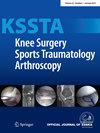Ten-year outcomes of hip arthroscopy for femoroacetabular impingement with osteoarthritis: Sustained functional benefits but high conversion to total hip arthroplasty
Abstract
Purpose
To evaluate the long-term clinical and radiographic outcomes of hip arthroscopy for femoroacetabular impingement syndrome (FAIS) in patients with mild to moderate osteoarthritis (OA). The hypothesis is that patients with FAIS and mild to moderate OA would experience sustained improvements in iHOT-12 at 10-year follow-up, despite natural OA progression.
Methods
This prospective cohort study included 75 patients (80 hips) with FAIS and radiographic signs of mild to moderate OA (Tönnis grade 1 or 2) who underwent hip arthroscopy between November 2011 and December 2012. The International Hip Outcome Tool (iHOT-12) was the primary outcome at a minimum of 10-year follow-up. Radiographic progression of OA using Tönnis classification and conversion to THA were recorded. Statistical analysis of patient-reported outcome measures (PROMs) was performed with Wilcoxon signed-rank test. Relative risk assessment (RR) for conversion to THA for Tönnis grade 1 and 2 was reported.
Results
At 10-year follow-up, 26 patients (29 hips) had undergone THA, resulting in a hip survivorship of 59% while 41% of hips progressed to THA by 10 years. The mean time to THA was 7.1 years (±1.5). Patients with Tönnis grade 2 at baseline had a significantly higher risk of THA compared with Tönnis grade 1 (RR = 3.44, 95% CI: 1.81–6.55, p < 0.001). Among non-THA patients, 79% reported satisfaction with surgery. The iHOT-12 score improved from 41.4 (±17.1) preoperatively to 71.0 (±26.7) at follow-up (p < 0.001), with 67% of patients exceeding the minimal important change (MIC) threshold. Radiographic progression of Tönnis grade was observed in four hips.
Conclusion
Hip arthroscopy in patients with FAIS and mild to moderate OA provides substantial long-term functional benefits for those patients not having to undergo THA. However, preoperative OA severity is a key predictor of THA conversion with nearly two-fifths of hips requiring THA within 10 years.
Level of Evidence
Level IV, case series.






 求助内容:
求助内容: 应助结果提醒方式:
应助结果提醒方式:


